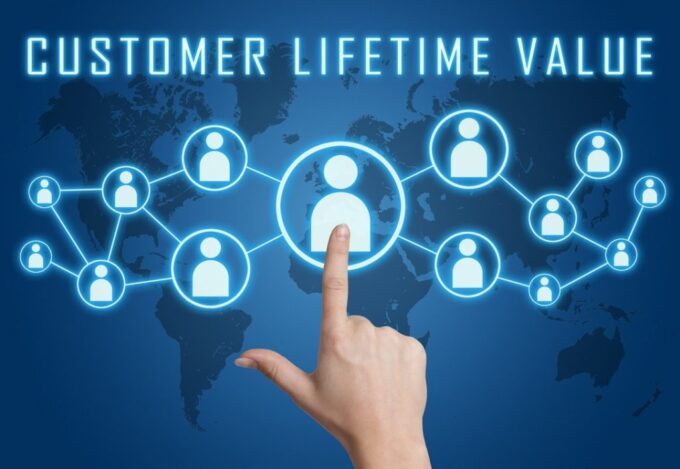Customer success metrics quantify a customer’s adoption, retention, and recommendation of a product. They are critical when it comes to developing processes that increase client lifetime value. Customer success metrics can provide insightful data on churn, uptake, and product satisfaction, among other things. Annual contracts can no longer be used to bind clients.
Additionally, the cost of gaining new clients has increased significantly. It’s not just beneficial to your consumers when you assist them in achieving success. It fosters loyalty, which is beneficial for the company.
Customer success metrics quantify the level of service provided to customers. You can label yourself a customer-centric organization and encourage a customer-growth culture, but you must still decide whether the product improves a customer’s daily routine. Customers must be successful in order to generate recurring revenue.
Assuring and educating your clients entails adapting your business strategy to their specific needs. Metrics for customer success assist you in evaluating your efforts. The more success your customers have with your product or service, the more delighted they will be.
Understanding and acting on these insights enable you to convert your consumers into advocates. Additionally, it assists you in increasing revenue by prolonging the customer lifetime value.
1. Customer Churn Rate

Customer churn is defined in the business sector as the percentage of customers who cease using your service after a given period. Consider the following:
- Subscriptions are cancellable at any time.
- The account of a client has been closed.
- Non-renewal of a contract or service agreement
- A consumer’s purchase from a different shop or use of a different service provider
This is a critical customer success metric to track and analyze. Before you can calculate your turnover rate, you must first agree on how you will measure the above-mentioned behaviors and on what constitutes client attrition in your business. After completing this step, you can return to the books and perform the computations.
What is the churn rate calculation formula?
Once you’ve decided what constitutes a churned customer, calculating the churn rate is straightforward. You must have the following in mind:
- How many consumers do you have at the start of the period (again, this is usually a monthly calculation)
- How many clients did your business lose within the same period?
Divide the number of consumers who left by the number of new customers and multiply by 100. This approach results in your turnover rate.
2. Customer Lifetime Value

Customer lifetime value is an additional critical metric to consider when evaluating customer success. As is the case with other indicators, a single number might transmit a great deal more information.
Client lifetime value (CLV) is an estimate of a customer’s worth, or how much they will spend with you throughout their relationship. Divide the average income per account by the rate at which customers depart your organization to determine client lifetime value. Once you’ve determined your CLV, you can begin estimating the amount of money you should spend on acquisition, another critical figure to understand.
However, customer success metrics should indicate that your customer lifetime value (CLV) is increasing rather than falling. This figure is increasing, which indicates that consumers are either remaining with you for a longer period or adding additional services/upgrading their accounts.
Rather than that, if the number is reducing, it is critical to determine whether your client turnover rate is increasing as well or to do an investigation into the value of your services. The fact that your firm is expanding demonstrates that your clients recognize the value of your services and are eager to invest in them in the future.
3. Net Promoter Score

The Net Promoter Score (NPS), alternatively referred to as the Net Promoter Index (NPI), is a customer pleasure and loyalty metric. The net promoter score (NPS) is derived using consumer responses to a survey in which they are asked to rate their likelihood of recommending your service or product on a scale of -100 to 100.
Net Promoter Score survey participants are requested to explain their responses. The capacity to assess the root causes of a negative customer experience enables businesses to improve their customer service.
Net Promoter Score, as a critical customer success key performance indicator (KPI), elicits valuable customer feedback and aids in the measurement of quantitative and qualitative data to boost customer happiness.
How Is It Calculated?
NPS is measured by asking consumers one simple question: “On a scale of 1 to 10, how apt are you to suggest our product or service?”
You must survey customers and ask them only one question: “How inclined are you to recommend our service or product?” Once the participants have delivered their responses, you must organize them according to their responses, for example:
- Detractors are graded on a scale of 0 to 6.
- Passives are classified as having a value of 7-8.
- Promoters are the digits 9-10.
After categorizing the survey responses, the net promoter score (NPS) can be determined. The net promoter score is computed by deducting the promoters’ percentage from the critics’ percentage. As a result, the Net Promoter Score for your business is determined.
4. Customer Retention Rate

New customers are always welcome, and increasing the number of users at the top of your funnel can be important to your business’s growing success. The converse is true if customers try your product once and then abandon it.
This suggests that they do not see the value in your offering or do not fully comprehend it. This may be a significant problem because it will increase your turnover rate and have a detrimental effect on your organization’s growth.
Tracking your retention rate enables you to determine how many users derive value from your product in comparison to how many consumers do not. To determine retention rate, multiply the number of active users by the total number of users over a certain time.
Assume you have a 30-day window of opportunity. By 78 to a total of 100, active consumers who continue to subscribe to your product outnumber total users. You would be in good shape with a retention rate of 78 percent.
After determining how many consumers actively return to your product, you can contact the user segments who aren’t returning to determine what’s causing the friction. After that, you can create a Customer Success playbook that includes teaching resources that your team may send to users who exhibit risk or low engagement.
It’s an incredible sensation to be able to aid those users in comprehending the value of your product and encouraging them to return. You can also consider hiring an answering service.
This is a live call answering service the same as a call center that automatically answers your client’s calls to get their feedback. This helps avoid any missed opportunities from client feedback. If this sounds like something you need, visit https://responsivecallcenter.com/blog/difference-between-call-center-and-an-answering-service/.
5. Customer Retention Cost

As the name implies, it is a statistic used to determine the cost of retaining a client. This category includes any expenses made by a business to retain existing clients. In comparison to the one-time cost of client acquisition, customer retention costs are incurred throughout the customer’s relationship with your business.
By calculating customer retention costs, you can quantify the amount of money spent on customer retention initiatives during the customer’s tenure (CRC). This helps you make intelligent decisions about future investments in retention and acquisition activities, such as employee training, based on the data supplied.
Additionally, it is critical to incorporate retention costs in the CAC payback period to evaluate how long it would take your business to recoup the money invested in acquisitions.
How to Calculate it
Each expense incurred in the process of retaining customers is included in the cost of customer retention. The CRC is calculated as follows:
Customer retention costs are calculated as (staffing + tools/software used + customer marketing + training + customer loyalty programs) / active customers.
Margin compression is a result of high retention costs. Reduce retention costs by focusing on people costs, boosting efficiency through automation, eliminating wasteful operations, conducting an audit of retention tools, and removing those that are no longer necessary or cost-effective to keep.
Bottom Line
Customer success metrics, like customer success itself, must be closely monitored to guarantee they are being met. The converse is true for customer service, which is frequently responsive.
You respond to the client as soon as he or she approaches you. Customer success, on the other hand, checks all key performance indicators (KPIs), including those outlined above, as well as those defined in an SLA (service level agreement) and others, and insists on taking action before the customer raises concern.









